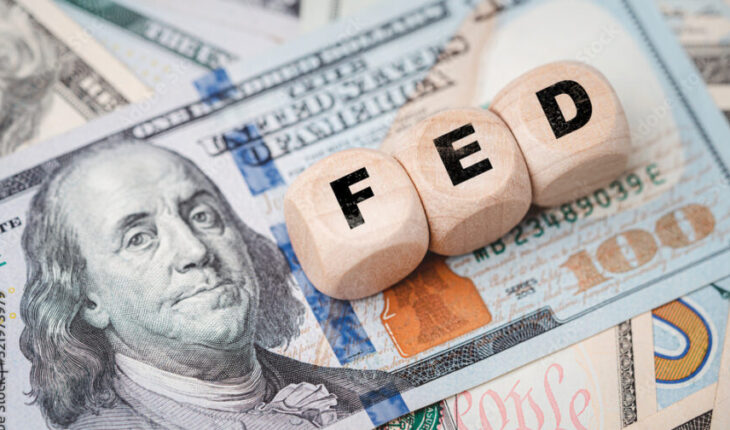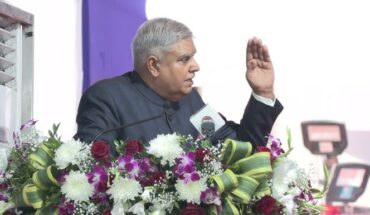The Federal Reserve of USA is the leader of central banks around the world, the biggest reason for which is that the US dollar is one of the strongest currencies in the world and USA is the strongest country in the world from a strategic and economic point of view. Generally, central banks around the world follow the footsteps of the Federal Reserve. However, due to the economic conditions of all countries being different, sometimes the central banks of some countries take decisions other than the Federal Reserve. Barring a few exceptions, India also takes steps in line with the decisions taken by the Federal Reserve.
For the first time in the last 4 years, the Federal Reserve has cut the policy rates by 50 basis points on September 18, after which the possibility of central banks of other countries of the world also cutting policy rates has increased. It is also being seen as the growing apprehensions of the Federal Reserve about a possible economic recession in USA, because at present the pace of development in USA is slow, in which it is necessary to do so to accelerate it.
After the latest decision of the Federal Reserve, foreign institutional investors have invested more in the Indian market. On 24 September, Sensex and Nifty managed to touch their highest level. Sensex reached the level of 85,163 and Nifty reached the level of 25,940. USA’s Dow Jones, Japan’s Nikkei, Hong Kong’s Hang Seng and China’s Shanghai Composite Index also saw a rise. The possibility of weakening of the dollar, reduction in lending rates, growth in investments and businesses etc. has increased, which is being confirmed by the growth in investments.
China is currently grappling with the problem of good governance, due to which foreign investors are refraining from investing there and some investors are turning to India. Like the US, the growth rate of parameters like production, consumption etc. in China is also slower than expected. In the month of August, the unemployment rate reached a 6-month high of 5.3 percent and the urban unemployment rate reached 17.1 percent in July, which was 13 percent in June. To accelerate the growth rate, China’s central bank, the People’s Bank of China, has cut lending rates, so that there is a rise in borrowing and economic activities accelerate.
The question that is bound to arise here is whether the Reserve Bank of India will cut the repo rate in the upcoming monetary reviews on the lines of the Federal Reserve, because to maintain the balance between inflation and growth, the Reserve Bank has not made any change in the repo rate since February 2023, and it remains at 6.5 percent. Therefore, before reducing the repo rate, the Reserve Bank will have to discuss in depth the current economic situation, GDP growth rate, inflation situation, pace of economic activities etc.
Gross Domestic Product (GDP) figures in India are continuously improving. Global rating agency Moody’s has increased India’s GDP growth forecast for calendar year 2024 to 7.1 percent, which was earlier 6.8 percent and 6.1 percent. However, Moody’s has kept India’s GDP growth forecast for 2025 unchanged at 6.5 percent, while the GDP growth forecast for 2026 is 6.6 percent. Even though Moody’s has lowered the GDP growth forecast for calendar year 2025 and 2026 compared to the calendar year 2024. However, these figures are better than the many developed countries of the world.
Retail inflation remained below 4 percent in July and August and the price of food items is expected to come down after the end of rains, due to which retail inflation is expected to come down further in the coming months. Moody’s has projected inflation in India at 4.5 percent and 4.1 percent in 2025 and 2026. According to the Reserve Bank of India, inflation may come down to 4.5 percent in FY 2025.
HSBC manufacturing PMI fell to 56.7 in September 2024 from 57.5 in August. Service PMI also fell to 58.9 percent in September from 60.9 in August. Of course, manufacturing and service PMI have registered a partial decline in September as compared to August. Still, it is above 50, which shows that the manufacturing and service sector is in a bullish trend.
The repo rate has been maintained at 6.5 per cent since February 2023. Nevertheless, borrowings remain robust. Credit offtake grew by 5.8 per cent as compared to December 2023 and grew by 0.4 per cent sequentially for the fortnight ended August 9, 2024. In absolute terms, in the last 8 months, credit offtake grew by Rs 9.2 lakh crore to reach Rs 168.8 lakh crore as of August 9, 2024. This is a good sign. If the repo rate is cut, borrowings and growth will accelerate even further.
At present, GDP is growing, and inflation is also under control. Also, retail inflation is expected to remain within the tolerance limits set by the Reserve Bank of India in FY 2025 and FY 2026. As the dollar remaining weak and investment and loan uptake increasing, economic activity is picking up pace, to boost this further, the Reserve Bank of India may cut the repo rate by at least 25 basis points in the next monetary review.
Satish Singh, Ahmedabad Based Senior Columnist, views are personal, Cell No-8294586892






